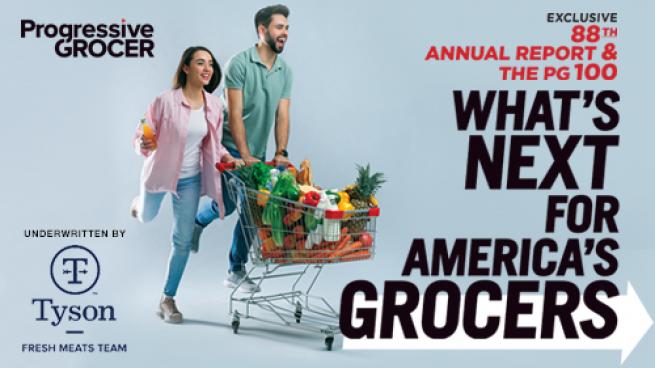What’s Next For America’s Grocers: Progressive Grocer’s 88th Annual Report

Now What Happens?
Revisiting events from the prior year and predictions about lasting changes brought on by a pandemic is a useful way to pivot toward conversations about the current environment and the road ahead. In many respects, the future seems clearer now that it did a year ago at this time. For starters, multiple highly effective vaccines were developed in record time. By the midpoint of the year, roughly half of the nation will have been immunized, helping the nation achieve escape velocity to break free from the lifestyle-altering forces of a pandemic.
This shift isn’t necessarily good news for food retailers for a couple of reasons. At a high level, it means that the displaced demand that flowed to food retailers from restaurants that were shuttered or operating at reduced capacity due to social-distancing restrictions will now flow back to foodservice operators. How much of it and how fast is unclear, but the negative effect in 2021 is likely to be as profound as the positive effect was in 2020, when the combination of reduced access to restaurants and pantry loading led to sales gains that were well into the double digits. Already, major publicly held retailers are forecasting flat to declining same-store sales for the duration of 2021 as they lap extraordinary gains in 2020.
One way to assess the potential negative effects of a COVID-19 recovery on grocery this year is to look at the extent of pain and suffering felt by the restaurant industry last year. The National Restaurant Association (NRA) described the pandemic as a devastating force that put the industry through the worst business conditions in history. The restaurant and foodservice industry lost an estimated $240 billion in sales and roughly 8 million employees were laid off or furloughed. As of Dec. 1, Washington, D.C.-based NRA estimates in its “2021 State of the Industry” report that more than 110,000 eating and drinking establishments completely closed for business temporarily or for good. So, while the pendulum swings back toward food and away from food at home, the fact that there are fewer foodservice operators in business suggests that grocery won’t give back all of the share-of-stomach gains it realized during the past 14 months.
NRA concedes as much in its annual report, noting, “Although restaurant and foodservice sales are expected to post double-digit growth in 2021, it won’t be nearly enough to make up for the substantial losses experienced in 2020.”
Even so, there will be enough of a restaurant rebound that food retailers will feel a COVID-19 sales hangover. This issue of where the pendulum settles between food at home and food away from home will be a major overhang on the industry in 2021, but there are plenty of other issues where uncertainty abounds and opportunity beckons. As was the case last year, we peer into the future for our annual look at the key changes, trends, new realities and shifting societal expectations affecting the world of food and consumables. Our hope is to provide a clear-eyed view of what’s next for America’s grocers.

